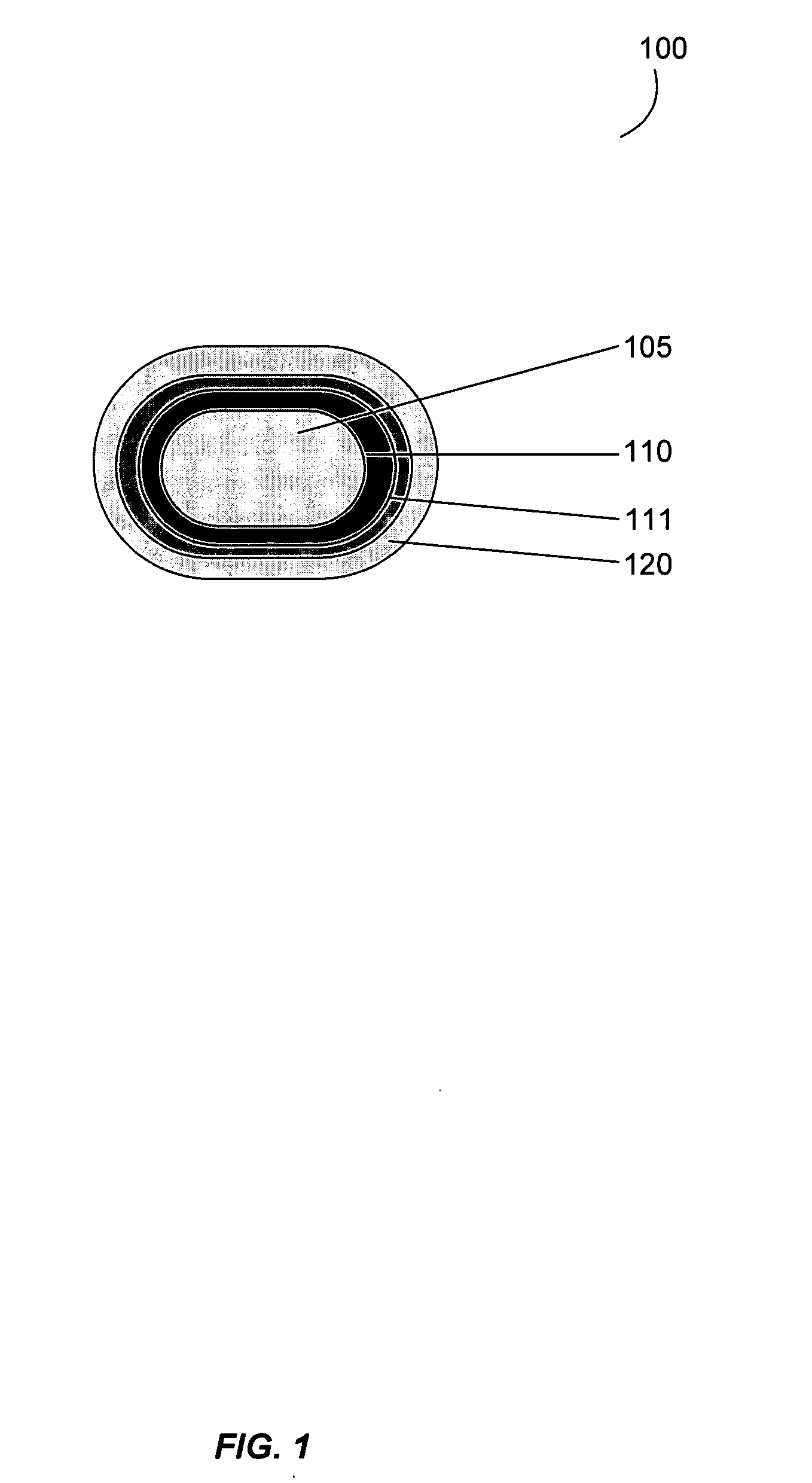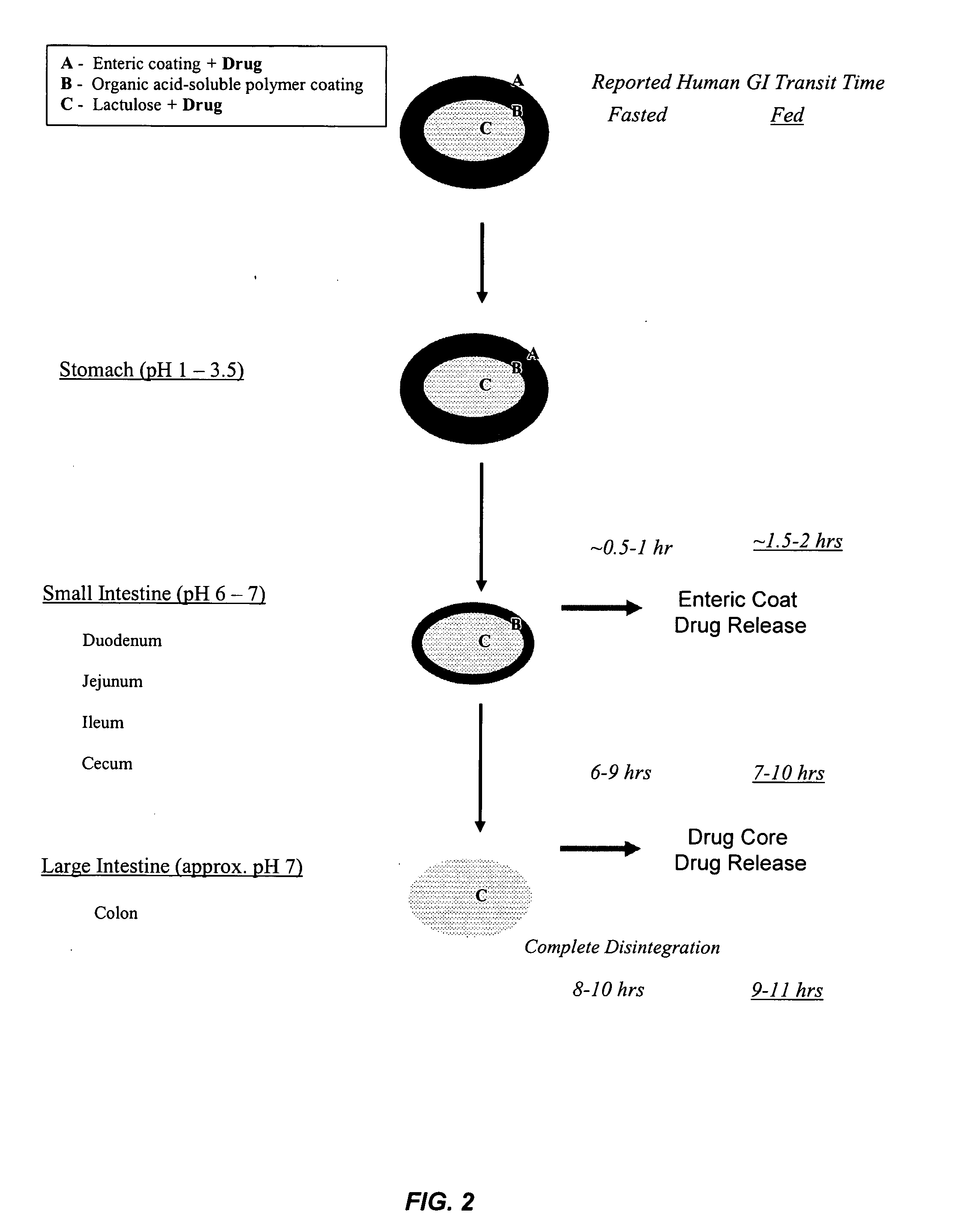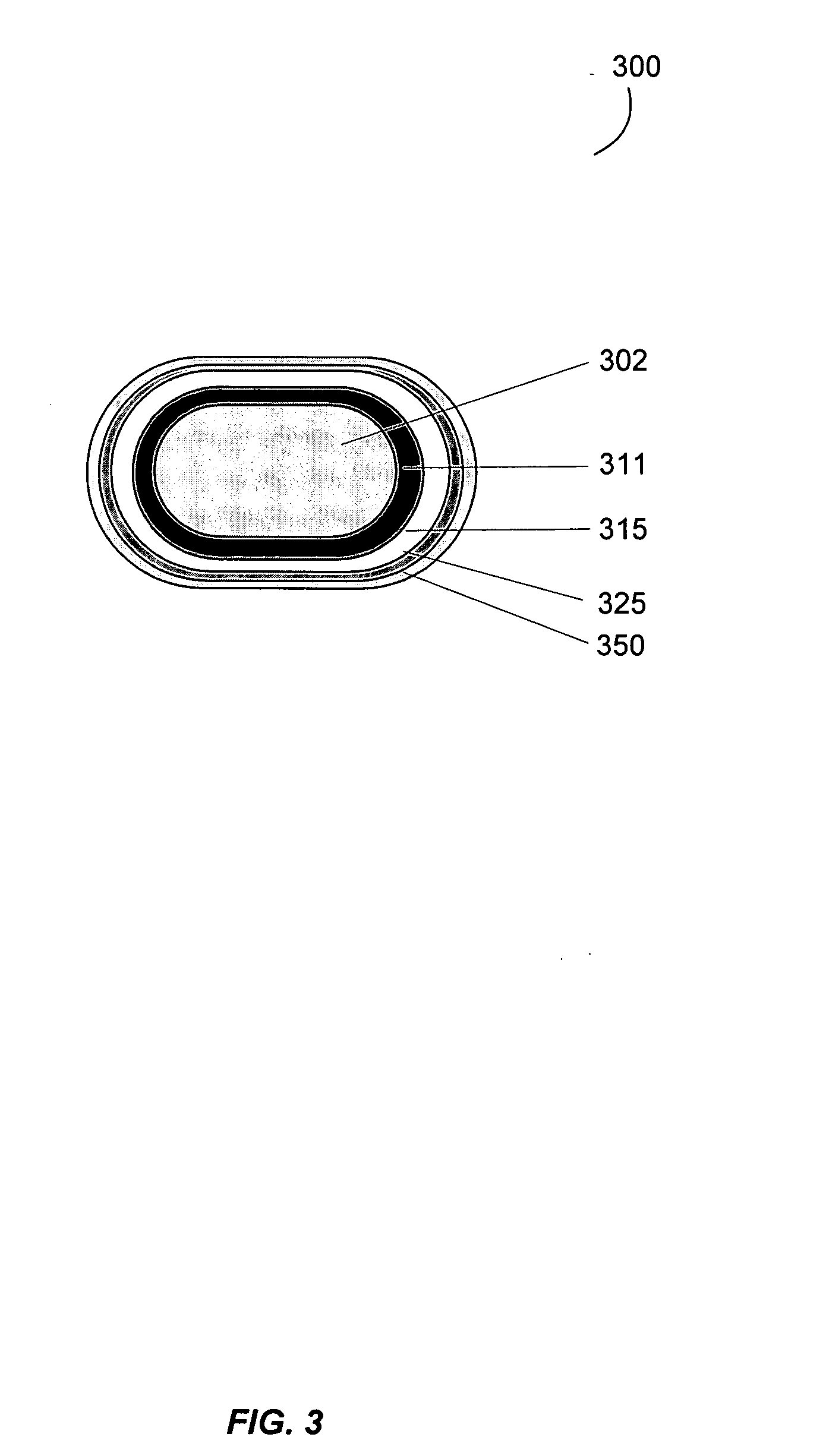Gastrointestinal-specific multiple drug release system
a drug release and gastrointestinal technology, applied in the direction of drug compositions, antibacterial agents, metabolic disorders, etc., can solve the problems of low specificity to the colon, drug release in the colon, and other similar delayed release systems are also unsuccessful in colon-specific drug release, so as to reduce the frequency of drug dosing
- Summary
- Abstract
- Description
- Claims
- Application Information
AI Technical Summary
Benefits of technology
Problems solved by technology
Method used
Image
Examples
example 1
Famotidine Multiple Release Tablet
[0167] A dual release tablet for delivering two 10 mg pulses of the histamine H2-receptor antagonist famotidine (total 20 mg per day) can be formulated using a spray-coated tablet manufacturing process. The tabletting pressure is about 350 kg / punch. The initial release of drug is provided by the enteric coat. The formulation contains:
Drug core:Famotidine10mgLactulose100mgTotal:110mg
[0168] Famotidine (t1 / 2=3 hrs.), lactulose, and optionally other additives are mixed to prepare the drug core. The drug core is first coated with about 10% w / w of Eudragit E100 (e.g., 9.5% w / w of Eudragit E100 in a 71:29 mixture of ethyl alcohol:water), based on the gained weight of the drug core, and then coated with a layer of from about 1% to about 10% w / w of HPMC (e.g., 5% HPMC 2910 in an aqueous solution) by means of a Hi-coater. The drug core tablet is subsequently coated with from about 5% to about 10% w / w of Eudragit L100 containing 10 mg of famotidine and opti...
example 2
Minocycline Multiple Release Tablet
[0169] A dual release tablet for delivering two 50 mg pulses of the antibiotic minocycline (total 100 mg per day) can be formulated using a spray-coated tablet manufacturing process. The tabletting pressure is about 350 kg / punch. The initial release of drug is provided by a separate drug layer. The formulation contains:
Drug core:Minocycline hydrochloride50mgLactulose50mgTotal:100mg
[0170] Minocycline hydrochloride (t1 / 2=9.5 hrs.), lactulose, and optionally other additives are mixed to prepare the drug core. The drug core is first coated with about 10% w / w of Eudragit E100 (e.g., 9.5% w / w of Eudragit E100 in a 71:29 mixture of ethyl alcohol:water) and then coated with HPMC containing 50 mg of minocycline hydrochloride. The drug core tablet is subsequently coated with a layer of from about 1% to about 10% w / w of HPMC (e.g., 5% HPMC 2910 in an aqueous solution) by means of a Hi-coater. Finally, the tablet is coated with from about 5% to about 10% w / ...
example 3
Allopurinol Multiple Release Tablet
[0171] A dual release tablet for delivering two 100 mg pulses of the antigout agent allopurinol (total 200 mg per day) can be formulated using a spray-coated tablet manufacturing process. The tabletting pressure is about 350 kg / punch. The initial release of drug is provided by a separate drug layer. The formulation contains:
Drug core:Allopurinol100mgLactulose100mgMeglumine20mgTotal:220mg
[0172] Allopurinol (t1 / 2=1.6 hrs.), lactulose, meglumine (for neutralization), and optionally other additives are mixed to prepare the drug core. The drug core is first coated with about 10% w / w of Eudragit E100 (e.g., 9.5% w / w of Eudragit E100 in a 71:29 mixture of ethyl alcohol:water) and then coated with HPMC containing 100 mg allopurinol. The drug core tablet is subsequently coated with a layer of from about 1% to about 10% w / w of HPMC (e.g., 5% HPMC 2910 in an aqueous solution) by means of a Hi-coater. Finally, the tablet is coated with from about 5% to abou...
PUM
| Property | Measurement | Unit |
|---|---|---|
| absorption time | aaaaa | aaaaa |
| absorption time | aaaaa | aaaaa |
| absorption time | aaaaa | aaaaa |
Abstract
Description
Claims
Application Information
 Login to View More
Login to View More - R&D
- Intellectual Property
- Life Sciences
- Materials
- Tech Scout
- Unparalleled Data Quality
- Higher Quality Content
- 60% Fewer Hallucinations
Browse by: Latest US Patents, China's latest patents, Technical Efficacy Thesaurus, Application Domain, Technology Topic, Popular Technical Reports.
© 2025 PatSnap. All rights reserved.Legal|Privacy policy|Modern Slavery Act Transparency Statement|Sitemap|About US| Contact US: help@patsnap.com



